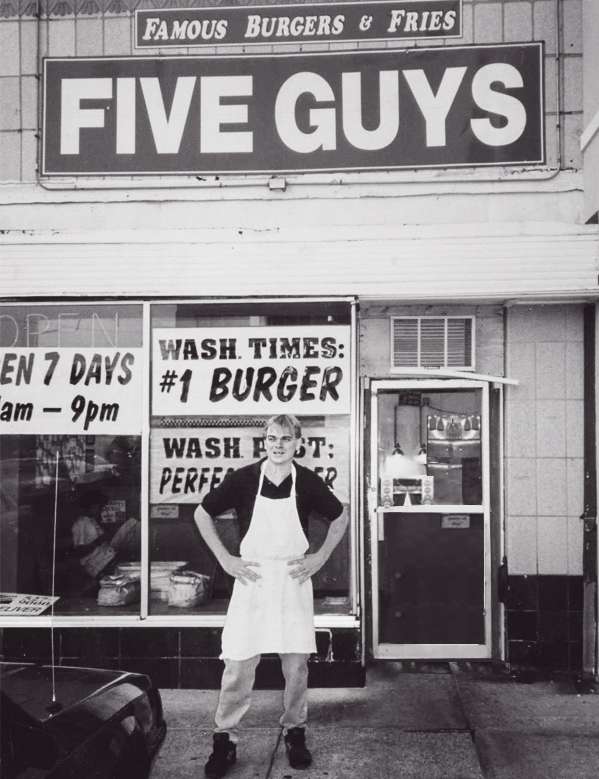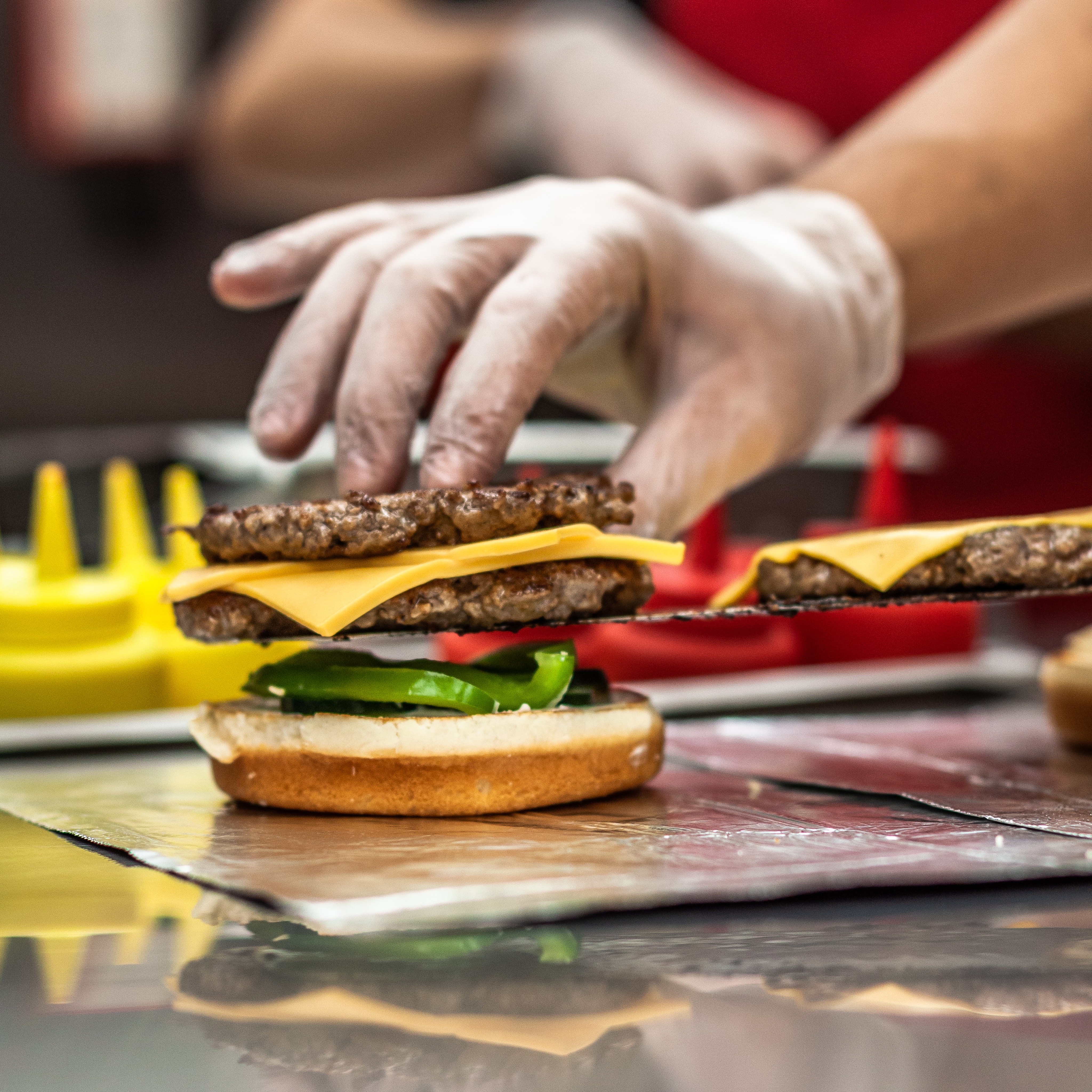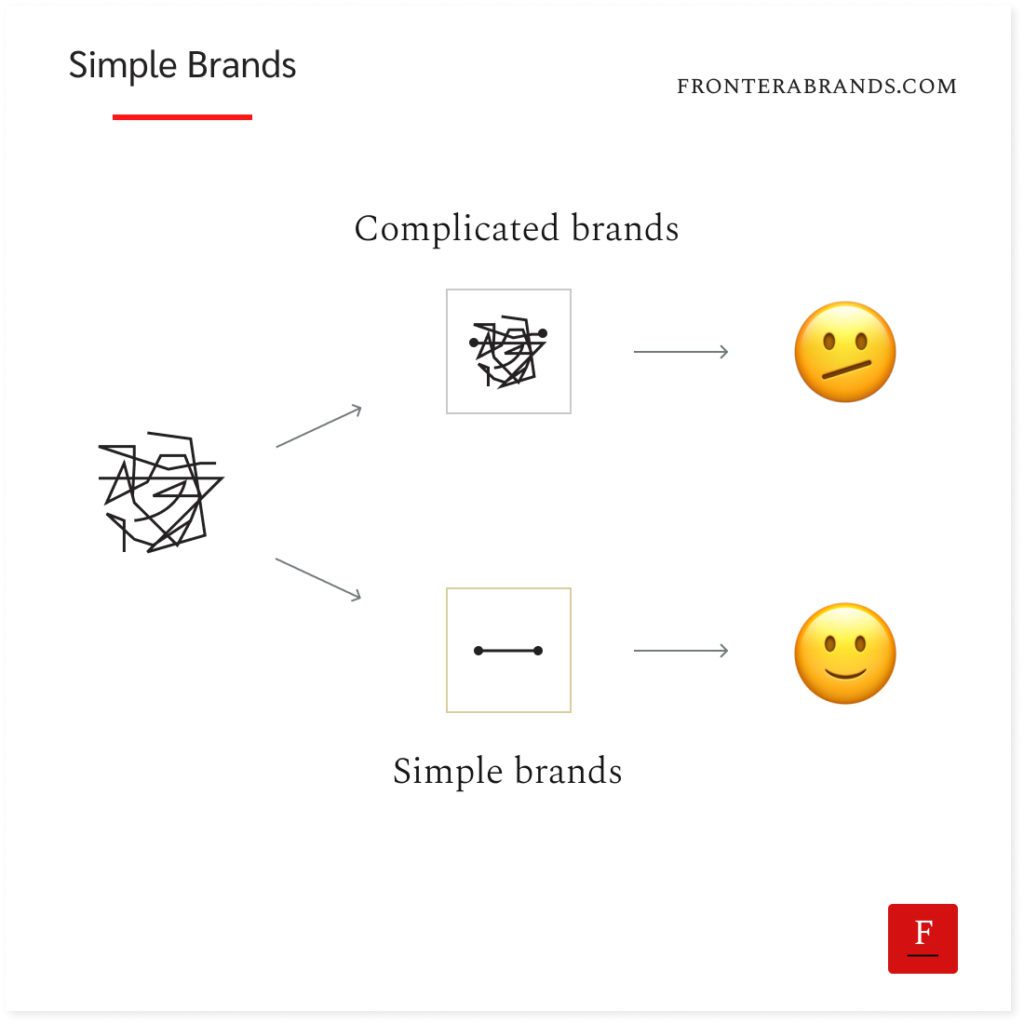Imagine this.
It’s 1986.
The fast food trend Ray Kroc started with McDonald’s 25 years ago is at its peak.
There is a burger restaurant in every corner of America.
McDonald’s, Burger King, Wendy’s…
What are the odds of a new burger restaurant to rise as a competitor in these conditions?
And not by focusing on a new product like Subway or Domino’s.
But by challenging the giants with good old burgers.
Well, listen to this.
Jarry and Janie Murrell gave their four sons two options in 1986.
Either go to college.
Or take the same money and start a business.
The brothers didn’t want college.
So they decided to start a burger restaurant.
They didn’t think much about the name.
They were four brothers.
And they were going to have their father in the business.
So they called it Five Guys.

Murrells had two challenges.
How to differentiate against giants like McDonald’s and Burger King.
And how to grow without having a huge advertising budget like them.
Now, by that time all burger chains have built systems to become efficient.
But those systems were for serving quickly.
And that inevitably had an impact on quality.
Almost all the ingredients were frozen and bought from suppliers with a cost priority.
So the five guys created a simple strategy for Five Guys.
Make the tastiest burgers with fresh ingredients.
Meat?
Fresh ground beef.
Burger buns?
Daily from a bakery.
Plus everything is prepared after you order, unlike other burger chains.
And you know what Murrells did for marketing?
While Ronald McDonald and Burger King were everywhere on TV, billboards, and newspapers, they decided to do no advertising.
Murrells wanted to make the burger so good, that the only marketing channel would be people telling their friends how good the burger was.

The result?
People loved it.
And as Murrells planned, customers did tell their friends about Five Guys.
So it became the favorite burger joint in Virginia.
But Five Guys was careful and slow with expansion, unlike others.
They made sure every new branch could get the same ingredients and prepare burgers the same way.
So despite the success, they deliberately took 15 years to grow to only 5 locations.
Then Matt (one of the sons) gifted the book “Franchising For Dummies” to his father to convince him that they can keep the quality even with franchising.
And franchising turned 5 locations in 2001 into 1700+ locations worldwide in 2023.
If there is a Five Guys in your city, you’ve probably heard about it despite not seeing any advertising (they still don’t have any advertising budget).
Now, think about it.
Five Guys has had a few items on their menu since their first day.
Cheeseburgers, fries, and cold drinks.
It’s not a place where you can find a salad, fish, and chicken burger.
So you go in.
You choose how you want the cheeseburger and fries.
And you watch the order being prepared at that moment with fresh ingredients.
While waiting, you also look at the place’s distinct red-and-white design and see potato and peanut sacks sitting around.
It’s different.
And when the burger is ready, you take a bite.
It’s juicy and tasty — you love it.
So you bring a group of friends next time.
And your friends also tell more people.
That’s it.
Simple product.
Simple marketing.
Simple brand.
The irresistible urge to complicate
Murrell brothers also had many opportunities to complicate things as with every growing business.
Some said to add salads to attract a new audience.
Some others said to add coffee to sell more.
And they did try to add coffee.
But coffee was tricky to do it right.
So they ended up selling coffee that you could get in gas stations.
It was not that bad.
But Murrells realized the coffee risked their only marketing channel.
People could tell their friends about the average coffee instead of the amazing burger.
And that would hurt the Five Guys brand.
So they dropped it from the menu.
Now, here’s the strange thing.
Most brands become successful through similar simplicity.
But as they grow, they feel the irresistible urge to complicate.
New products, new services, new offers…
That reduces the quality the brand delivers and confuses potential customers.
People are busy.
And the world is complex enough.
Nobody has the mental energy to figure out brands and what they stand for.
Nobody wants one more problem to solve.
And that’s why people adopt (and share) simple brands like Five Guys.
Easy to understand.
Easy to explain.

So how can you simplify your brand?
Three tips to simplify your brand:
1. Do less, but better
We’ve talked about Power Laws before — remember the dinner with Elon Musk.
20% of your activities bring 80% of the revenue and vice versa.
But despite this, most companies try to grow by adding new products and services that deliver little outcome.
Instead of doing what they are good at even better.
So they complicate the business and dilute the brand.
It’s a known story.
When Steve Jobs returned to Apple as CEO, he killed dozens of existing products before creating anything new.
And he focused the company on what it does best.
What made Five Guys successful was the tasty burgers with high-quality ingredients.
They knew it.
And they stuck with it.
Their growth didn’t come from new products and services.
But it came from becoming known for one thing.
And here’s the thing.
We live in a world where there is no room for the average.
Offer dozens of average products and services — nobody cares.
But offer one great product or service — everybody pays attention.
So do less.
And be better than anybody else in your circle of competence.
Become the Five Guys of your category.
2. Take the complexity away from the customer
Simple brands simplify customers’ lives.
Think about Square.
Small businesses had to go through a lot of hassle to accept credit card payments.
And dealing with banks is the last thing a business owner wants.
So Square simplified things by turning phones into payment terminals with a gadget.
And they became a $40b+ company.
Simple problem.
Simple solution.
Simple brand.
After burgers and payments, let’s talk about pills.
I saw an ad on Instagram the other day.
A company is selling multivitamins to help recover from raves.
Do you know the name of the brand?
Happy Tuesdays.
Their motto was simple: “Rave hard. Recover fast.”
Now, you can buy vitamins from any pharmacy or supermarket.
But if you go to festivals to dance for days, you don’t know what exactly your body needs to feel better the next day.
Even if you know it, you don’t want to buy 5 different vitamin packages.
So Happy Tuesdays simplified it for ravers.

Simple promise.
Simple brand.
And of course, they are able to sell it at 10X price compared with other vitamins.
Because you can’t compare it to anything else.
So look for opportunities to take the complexity away from the customers (remember the buying triggers).
It’s a great way to build a simple brand.
But don’t forget the first point.
It’s not about offering everything.
It’s about becoming known for one thing.
3. Be unapologetic
Is Five Guys attractive to people who want to get a cheap and fast burger?
No.
Is Five Guys attractive to people with peanut allergies?
No.
But they don’t care.
This is who they are.
This is what they stand for.
It takes some guts.
But there is no confusion for customers or their employees.
You might hate it or you might love it.
But you can’t ignore it.
Many brands lack that clarity.
And they look for the problem somewhere else.
So to stand out in a crowded market, first understand what you stand for.
Know what you are the best at.
And embrace it with all the weaknesses it brings — remember value tradeoffs.
Becoming (and staying) a simple brand is not easy.
But it’s always worth it.
–
Enjoyed this article?
Then you’ll love the How Brands Win Newsletter.
Get the “7 Positioning Sins That Cost B2B Brands Millions” guide when you join. It’s free.
